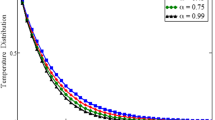Abstract
The purpose of this study is to predict and understand the hydrodynamic forces and their nonlinear behaviors of fluid motion around the submerged plate oscillating near a free surface. To achieve this objective, we have developed a composite grid method for the solution of a radiation problem. The domain is divided into two different grids ; one is a moving grid system and the other is a fixed grid system. The moving grid is employed for the body fitted coordinate system and moves with the body. This numerical method is applied to calculation of radiation forces generated by the submerged plate oscillating near a free surface. In order to investigate the characteristics of the radiation forces, the forced heaving tests have been performed with several amplitudes and different submergences near a free surface. These experimental results are compared with the numerical ones obtained by the present method and a linear potential theory. As a result, we can confirm the accuracy of the present method. Finally, the effect of nonlinear and viscous damping has been evaluated on the hydrodynamic forces acting on the submerged plate.
Similar content being viewed by others
References
Chung, J. S., 1977, “Forces on Submerged Cylinders Oscillating near a Free Surface,”Journal of Hydronautics, Vol. 11, No. 3, pp. 100–106.
Demirdzic, I. and Peric, M., 1990, “Finite Volume Method for Prediction of Fluid Flow in Arbitrarily Shaped Domains with Moving Boundaries,”International Journal for Numerical Methods in Fluids, Vol. 10, pp. 771–790.
Fujikubo, M., Takaki, M., Xiao, T. Y. and Yanagihara, D., 2002, “Structural Response and Strength of A New Type VLFS Using Submerged Plates,”Proceedings of 12th ISOPE, Kitakyushu, pp. 414–421.
Hinatsu, M. and Ferziger, J. H., 1991, “Numerical Computation of Unsteady Incompressible Flow in Complex Geometry Using a Composite Multigrid Technique,”International Journal for Numerical Methods in Fluids, Vol. 13, pp.971–997.
Lee, Y. G. and Miyata, H., 1990, “A Finite-Difference Simulation Method for 2D Flows about Bodies of Arbitrary Configuration,”Journal of Society of Naval Architects of Japan, Vol. 167, pp. 1–8.
Lighthill, J., 1986, “Fundamentals Concerning Wave Loading on Offshore Structures,”Journal of Fluid Mechanics, Vol. 173.
Park, J. C., Uno, Y., Matsuo, H., Sato, T. and Miyata, H., 2001 “Reproduction of Fully-Nonlinear Multi-Directional Waves By a 3D Viscous Numerical Wave Tank,”Proceedings of 11th ISOPE, Stavanger.
Takaki, M., Fujikubo, M., Higo, Y., Hamada, K., Kobayashi, M., Nakagawa, H., Morishima, S., Ando, K. and Tanigami, A., 2001, “A New Type VLFS Using Submerged Plates: SUB-PLATE VLFS-Part 1 Basic Concept of System-,”Proceedings of 20th OMAE, Rio de Janeiro, OMAE-01-5017.
Takaki, M., Imai, Y., Lee, S. M., Shibata, S. and Chiba, S., 2002, “Effect of a Submerged-Plate on Hydrodynamic Forces Acting on a Very Large Floating Structure,”Transactions of West-Japan Society of Naval Architects, No. 103, pp. 195–204.
Author information
Authors and Affiliations
Corresponding author
Rights and permissions
About this article
Cite this article
Kong, GY., Lee, SM. & Lee, YS. Composite Overlapping Meshes for the Solution of Radiation Forces on Submerged-Plate. KSME International Journal 18, 1203–1212 (2004). https://doi.org/10.1007/BF02983295
Received:
Revised:
Published:
Issue Date:
DOI: https://doi.org/10.1007/BF02983295




